Are you considering getting an Irish Wolfhound breed dog as a pet? If so, you are in for a treat. Irish Wolfhounds are one of the largest dog breeds in the world and have a gentle and affectionate personality. They were originally bred in Ireland for hunting wolves and deer, but today, they make excellent family pets. In this guide, we will explore the characteristics, temperament, and care requirements of an Irish Wolfhound to help you decide if this breed is the right fit for you and your family.
Breed Category: Hound
Country of Origin: Ireland
Average Size:81-86 cm (male), 71-76 cm (female)
Average Weight:54-72 kg (male), 40-54 kg (female)
Average Life Span: 6-8 years
Grooming Requirements: Moderate
Exercise Requirements:High
History and Origin
The Irish Wolfhound is a breed of dog that has a long and fascinating history. It is believed that the breed originated in Ireland over 2,000 years ago, and was used for hunting wolves, deer, and other large game. The breed was highly prized by the ancient Irish nobility, and was often given as a gift to other rulers and dignitaries.
The Irish Wolfhound was nearly extinct by the 19th century, due to a combination of factors including disease, famine, and the decline of the Irish aristocracy. However, a group of dedicated breeders worked to revive the breed, and by the early 20th century, the Irish Wolfhound had regained its popularity and was once again a beloved companion and hunting dog.
The Irish Wolfhound is a large and powerful breed, standing up to 32 inches tall at the shoulder and weighing up to 180 pounds. Despite its size, the breed is known for its gentle and affectionate nature, and is often referred to as the “gentle giant” of the dog world.
In addition to its hunting abilities, the Irish Wolfhound has also been used as a war dog throughout history. The breed was used by the Celts in battle, and was also used by the Romans and other ancient armies. During World War I, the Irish Wolfhound was used by the British army as a messenger and guard dog.
Today, the Irish Wolfhound is a popular breed around the world, and is known for its loyalty, intelligence, and gentle nature. The breed is often used as a therapy dog, and is also a popular choice for families with children. Despite its size, the Irish Wolfhound is a relatively low-energy breed, and is content to spend much of its time lounging with its family.
In conclusion, the Irish Wolfhound is a breed with a rich and fascinating history, and has played an important role in the lives of people throughout the centuries. Whether used for hunting, war, or simply as a beloved companion, the Irish Wolfhound has always been a breed that inspires admiration and respect. Today, the breed continues to be a beloved member of many families, and its gentle nature and loyal personality make it a wonderful addition to any home.

Size and Breed Category
The Irish Wolfhound is a breed of dog that is known for its impressive size and stature. These dogs are classified as a giant breed, with males typically standing at a height of 32-34 inches (81-86 cm) at the shoulder and weighing between 120-180 pounds (54-82 kg). Females are slightly smaller, standing at 30-32 inches (76-81 cm) and weighing between 105-135 pounds (48-61 kg). Despite their size, Irish Wolfhounds are known for their grace and elegance, with a long, lean body and a powerful stride.
In terms of breed category, the Irish Wolfhound is classified as a sighthound. This means that they were originally bred for hunting, using their keen eyesight to spot prey from a distance and their speed to chase it down. However, despite their hunting heritage, Irish Wolfhounds are known for their gentle and affectionate nature, making them popular family pets. They are also highly intelligent and trainable, although their large size can make them a bit challenging to handle for inexperienced owners. Overall, the Irish Wolfhound is a unique and impressive breed that is sure to turn heads wherever they go.
Fur Length and Colour
The fur of the Irish Wolfhound is typically long and wiry, with a rough texture that provides excellent protection against the elements. The fur is usually thickest around the neck and shoulders, forming a distinctive mane that adds to the breed’s imposing appearance. The fur can come in a range of colours, including grey, brindle, red, black, and white, with some dogs having a mix of two or more colours. The fur is often darker on the back and lighter on the chest and legs, creating a striking contrast that draws attention to the dog’s powerful physique. Overall, the fur of the Irish Wolfhound is an important part of the breed’s identity, providing both practical benefits and aesthetic appeal.
The colour of the Irish Wolfhound’s fur can vary widely, but there are some common patterns and shades that are often seen in the breed. Brindle is a popular colour, with a mix of dark and light stripes that create a unique and eye-catching look. Grey is also a common colour, ranging from a light silver to a darker charcoal shade. Red is another popular colour, with a range of shades from a deep mahogany to a lighter copper tone. Black and white are less common colours, but can still be seen in some dogs. The colour of the fur can also change as the dog ages, with some dogs becoming lighter or darker over time. Overall, the colour of the Irish Wolfhound’s fur is an important aspect of the breed’s appearance, adding to their distinctive and impressive look.
Termperament and Trainability
Irish Wolfhounds are known for their gentle and affectionate temperament. They are loyal and devoted to their owners, making them excellent family pets. Despite their large size, they are not aggressive and are generally good with children and other animals. However, they can be reserved with strangers and may require proper socialization to prevent shyness or fearfulness. Irish Wolfhounds are also known for their calm and patient nature, making them suitable for apartment living as long as they receive enough exercise and mental stimulation.
In terms of trainability, Irish Wolfhounds are intelligent and eager to please their owners. They respond well to positive reinforcement training methods, such as praise and treats, and can learn a variety of commands and tricks. However, they can also be stubborn at times and may require patience and consistency from their owners. Due to their size, it is important to start training early to prevent any potential behavior problems. Irish Wolfhounds also have a high prey drive and may chase small animals, so it is important to keep them on a leash or in a secure area when outside.
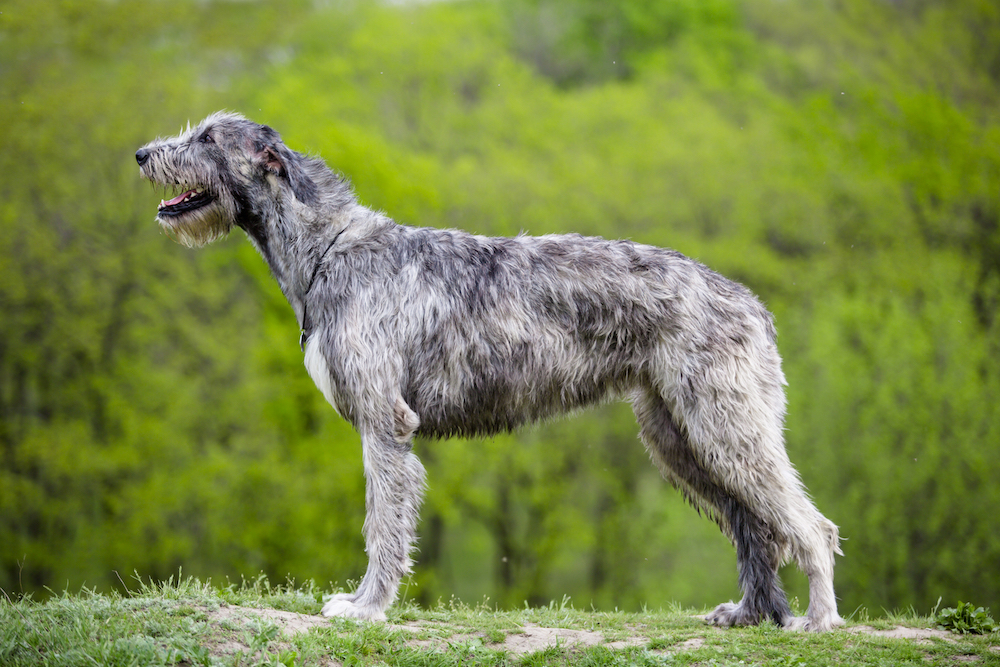
Known Health Conditions
Irish Wolfhounds are prone to certain health conditions that owners should be aware of. One of the most common issues is dilated cardiomyopathy, which is a heart condition that causes the heart to enlarge and weaken. This can lead to heart failure and other complications. Another condition that affects Irish Wolfhounds is osteosarcoma, which is a type of bone cancer that is more common in large breeds. Symptoms of osteosarcoma include limping, swelling, and pain in the affected area. Other health concerns for Irish Wolfhounds include bloat, hip dysplasia, and eye problems such as progressive retinal atrophy. It is important for owners to monitor their dog’s health and seek veterinary care if any symptoms arise.
In addition to the health conditions mentioned above, Irish Wolfhounds are also at risk for certain genetic disorders. One such disorder is von Willebrand’s disease, which is a bleeding disorder that affects the blood’s ability to clot. Symptoms of von Willebrand’s disease include excessive bleeding from cuts or injuries, nosebleeds, and bleeding gums. Another genetic disorder that affects Irish Wolfhounds is cystinuria, which is a condition that causes bladder stones to form. Symptoms of cystinuria include frequent urination, straining to urinate, and blood in the urine. It is important for owners to be aware of these genetic disorders and to have their dog tested if they suspect that their dog may be at risk.

Openness to Strangers
Irish Wolfhounds have a reputation for being one of the friendliest dog breeds around. They are known for their openness to strangers, and will often greet new people with a wagging tail and a friendly lick. This makes them great family pets, as they are always eager to make new friends and are very sociable animals. Despite their large size, Irish Wolfhounds are gentle giants and are very patient with children and other animals. They are also very loyal to their owners and will often follow them around the house, eager to be by their side.
One of the reasons why Irish Wolfhounds are so open to strangers is because they were originally bred as hunting dogs. They were used to hunt large game such as deer and wolves, and were often kept in packs. This meant that they had to be very sociable animals, and were used to being around other dogs and people. Over time, Irish Wolfhounds became more domesticated and were used as guard dogs and family pets. However, their friendly nature remained, and they are still one of the most sociable dog breeds around. They are also very intelligent animals, and can be trained to do a variety of tasks, including obedience training and agility courses.
Playfulness Level
The Irish Wolfhound is a breed that is known for its playful nature. They are energetic and love to play with their owners, making them great companions for families with children. Their playful nature is also evident in their interactions with other dogs, as they are known to be friendly and social animals.
Despite their large size, the Irish Wolfhound is surprisingly agile and loves to run and play. They are known to be particularly fond of playing fetch and chasing after toys. Their playful nature makes them a great addition to any household, as they are always up for a game or a run around the garden. However, it is important to remember that their size and strength means that they can be quite boisterous, so it is important to supervise them during playtime to ensure that they do not accidentally knock over any small children or fragile objects.
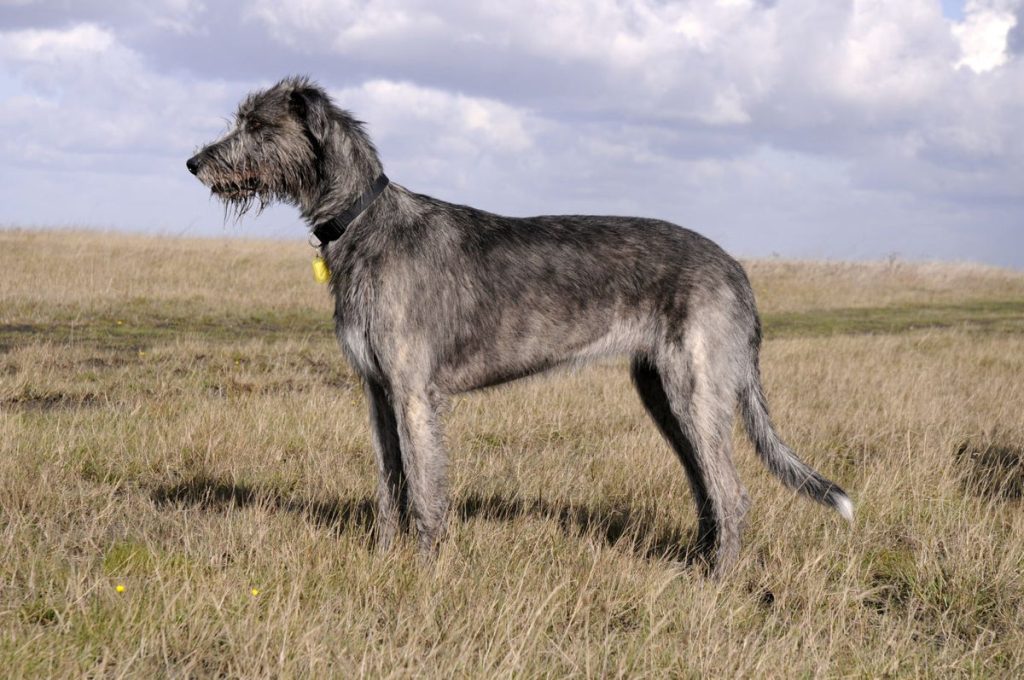
Suitability as a Pet for Children
Irish Wolfhounds have a gentle and affectionate nature, making them a great pet for children. They are known for their loyalty and patience, which makes them an ideal companion for families with kids. These dogs are also very intelligent and easy to train, which means that children can learn how to take care of them and teach them new tricks. Additionally, Irish Wolfhounds are very active and love to play, which means that they can keep up with the energy levels of children. However, due to their large size, they require a lot of space to move around and exercise.
Exercise Needs
Irish Wolfhounds require a significant amount of exercise to maintain their physical and mental health. As a large breed, they need plenty of space to run and play, making them better suited to homes with large gardens or access to open spaces. A daily walk of at least an hour is recommended, but they will also benefit from additional exercise such as running, hiking, or swimming. It is important to note that Irish Wolfhounds should not be over-exercised as puppies, as this can cause damage to their developing bones and joints. Instead, they should be given short, gentle walks until they are fully grown.
In addition to physical exercise, Irish Wolfhounds also require mental stimulation to prevent boredom and destructive behavior. Interactive toys, training sessions, and games such as hide-and-seek can help keep their minds active. As a breed that enjoys human company, they also benefit from spending time with their owners and participating in activities such as obedience training or agility. It is important to provide a balanced exercise routine that meets both their physical and mental needs to ensure they remain happy and healthy.
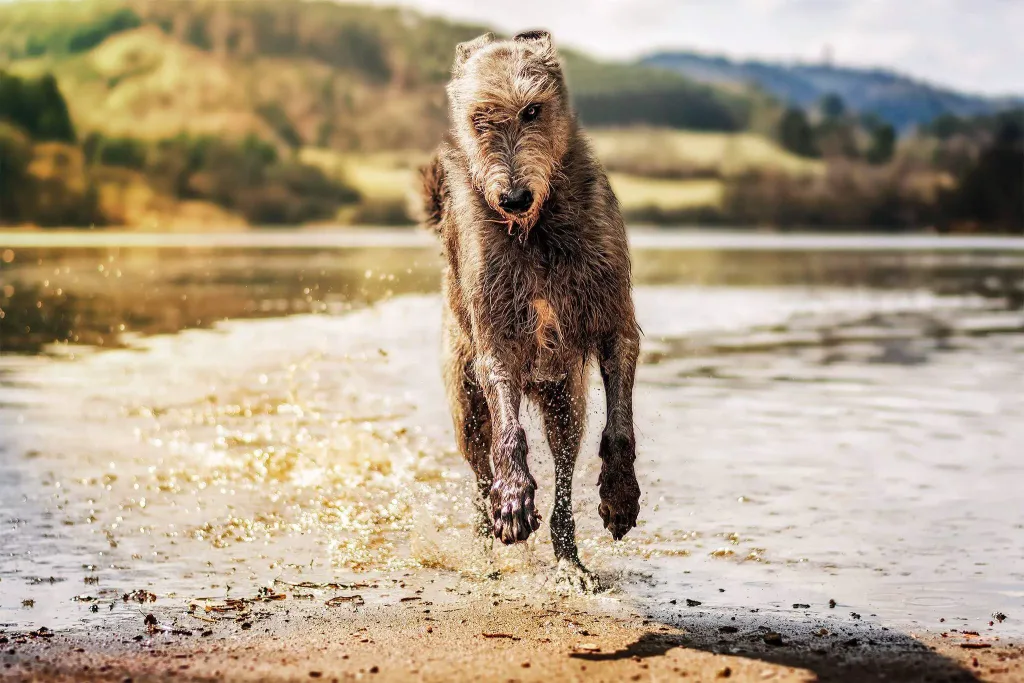
Suitability for a Multi-Pet Family
Irish Wolfhounds have a reputation for being gentle giants and are often described as being friendly and sociable. They are known to be good with children and can make excellent family pets. When it comes to other pets, however, it can be a bit more complicated. While some Irish Wolfhounds may get along well with other animals, others may have a strong prey drive and see smaller pets as potential prey. It is important to socialize Irish Wolfhounds with other animals from a young age and to supervise them closely when they are interacting with other pets.
Housing Requirements
Irish Wolfhounds require a spacious living environment that can accommodate their large size. A minimum of 30 square meters of indoor space is recommended for these dogs. The living area should be well-ventilated and have access to natural light. It is also important to provide a comfortable bed for the dog to rest on. The bed should be large enough to accommodate the dog’s size and provide adequate support for their joints. Additionally, Irish Wolfhounds require access to a secure outdoor area where they can exercise and play. The outdoor area should be enclosed with a fence that is at least 1.8 meters high to prevent the dog from escaping. The area should also be free from any potential hazards such as sharp objects or toxic plants.
Irish Wolfhounds require a balanced diet that is rich in protein and nutrients to maintain their health and wellbeing. The recommended daily intake for an adult Irish Wolfhound is approximately 1.5-2.5 kg of high-quality dog food. It is important to provide fresh water at all times and to monitor the dog’s weight to ensure they are not becoming overweight. Regular exercise is also essential for Irish Wolfhounds to maintain their physical and mental health. Daily walks and playtime in a secure outdoor area are recommended. Additionally, regular veterinary check-ups are important to monitor the dog’s health and to address any potential health issues early on.
Summary
Irish Wolfhounds have a gentle and affectionate nature, making them a great choice for families with children. They are also known for their loyalty and devotion to their owners. However, due to their large size, they require plenty of space to move around and exercise. They also have a relatively short lifespan compared to other breeds, which should be taken into consideration before committing to owning one. Overall, Irish Wolfhounds can make wonderful pets for the right family.
Irish Wolfhound Dog FAQS
No, Irish Wolfhounds can be stubborn and difficult to train. Consistent and patient training is necessary.
Yes, Irish Wolfhounds are known for being gentle and patient with children.
No, Irish Wolfhounds are large dogs and need plenty of space to move around. They are better suited for homes with large yards.
Yes, Irish Wolfhounds shed moderately throughout the year and heavily twice a year.
Irish Wolfhounds have a lifespan of 6-8 years.
An Irish Wolfhound typically weighs between 48-54 kg.
The cost of owning an Irish Wolfhound can range from $1,500 to $3,000 per year, including food, vet bills, and grooming expenses.
Irish Wolfhounds need at least 30-60 minutes of exercise per day.
Irish Wolfhounds are prone to heart disease, bloat, and hip dysplasia.
The average height of an Irish Wolfhound is 81-86 cm.

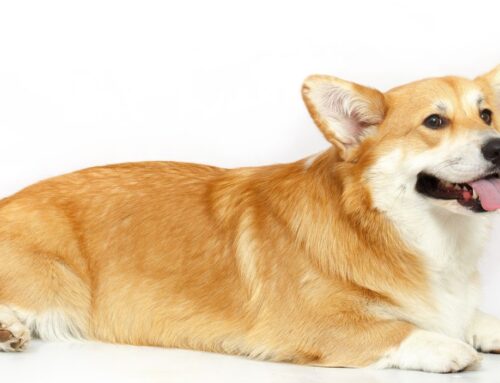

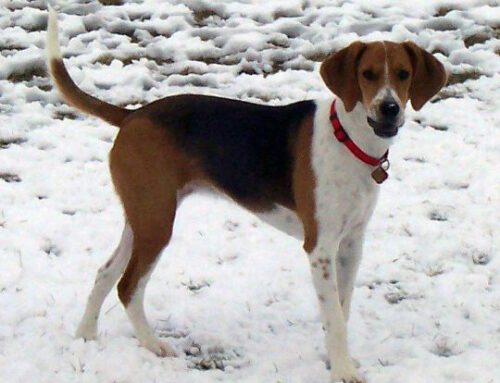
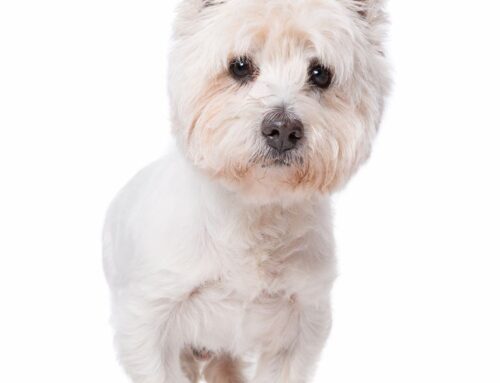

Leave A Comment